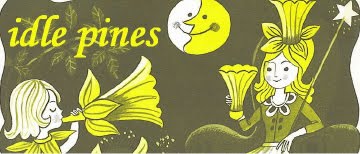Maud Isabel Little was born in September 1867, in Darwin, Northern Territory, the daughter of John Archibald Graham Little, the Northern Territory Post and Telegraph Superintendent, and his wife Matilda Cecily, née Johnston. Matilda died soon after Maud was born, and her father sent his children south to be educated. She had at least one sister, Edith, who was nine years older, and was educated at Miss Brunskill’s School, Semaphore, South Australia before attending Sydney University. Her sister later married a Mr Lawrie (Austlit). Maud learnt the violin and the piano, and public performances by the sisters are recorded in Northern Territory newspapers between 1895 and 1901. When Maud’s father died in 1906, Maud went to live with her sister in Mount Gambier, South Australia. She died in 1961 in Victoria. Dunham Days in part portrays Subiaco, which has led to suggestions that Maud was educated there (Austlit). Subiaco was a Benedictine girls’ convent school founded near Parramatta in 1858 (Sherington 22).
Dunham Days: A Sketch. Adelaide: E. J. McAlister & Co., 1913. 106 pages. Illustrated Marian Alsop, b/w frontis. & 3 b/w illus.
The second of only two Australian girls’ school stories to be set in Catholic schools, Dunham Days concerns the final term of best friends. Helen Scott and Marian Dance attend Dunham, a convent school on the Parramatta River in Sydney. The two girls are dual Heads and about to sit for the University examinations. Dunham Days contains similar moral themes to the ones explored in the other catholic girls’ school story, Nellie Doran . One of the girls, Inez, loses her temper and accidentally hits another girl. Inez has a passionate temper which she constantly has to control. According to school rules Inez will be expelled unless the whole school petitions against it. One of the girls, Eleanor, refuses to comply until her friend threatens that she will tell the Nuns about the illicit books she reads. Inez is saved from expulsion and vows she will never forget the incident, praying to God to help her control her temper. When one of the girls falls violently ill, Eleanor’s misdeeds comes to light and she is punished. She has to make a public apology to Inez and she is stripped of her monitor’s privileges and can no longer wear the ribbon which signifies that she is a Child of Mary. These storylines encourage good Catholic morals in the readers. In Dunham Days ’ conclusion, Helen and Marion have finished their exams and are contemplating their respective careers. Helen is going to live in New Guinea to play the role of daughter to her widowed father while Marian would like to become a Nun. Unlike British girls’ school stories which offered careers at University, there were few fictional Australian schoolgirls who pursued this path. The traditional catholic careers of family, convent, service and home life also appear in Nellie Doran where the heroine chooses to remain with her family instead of pursuing a musical career in Europe.



No comments:
Post a Comment